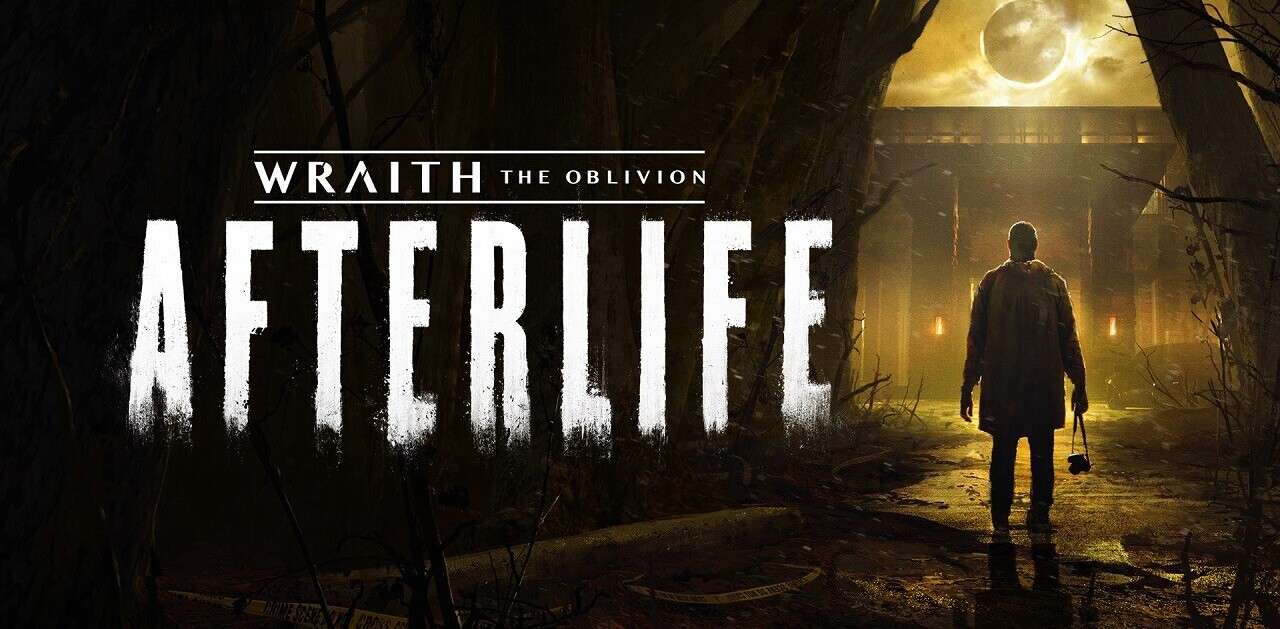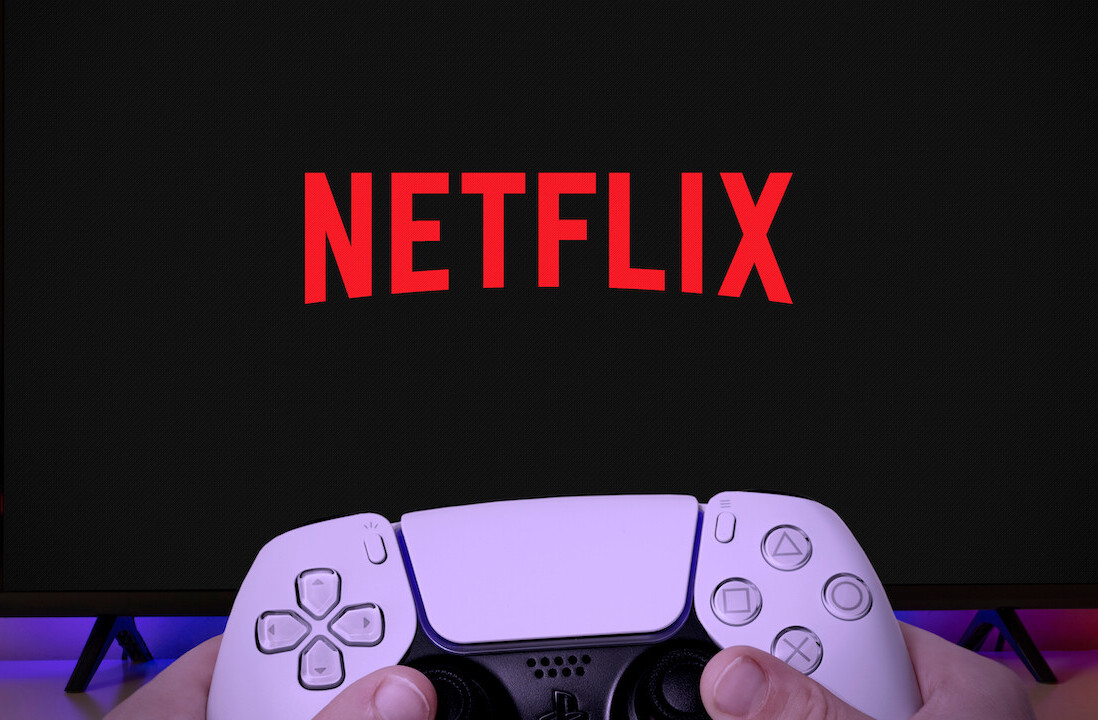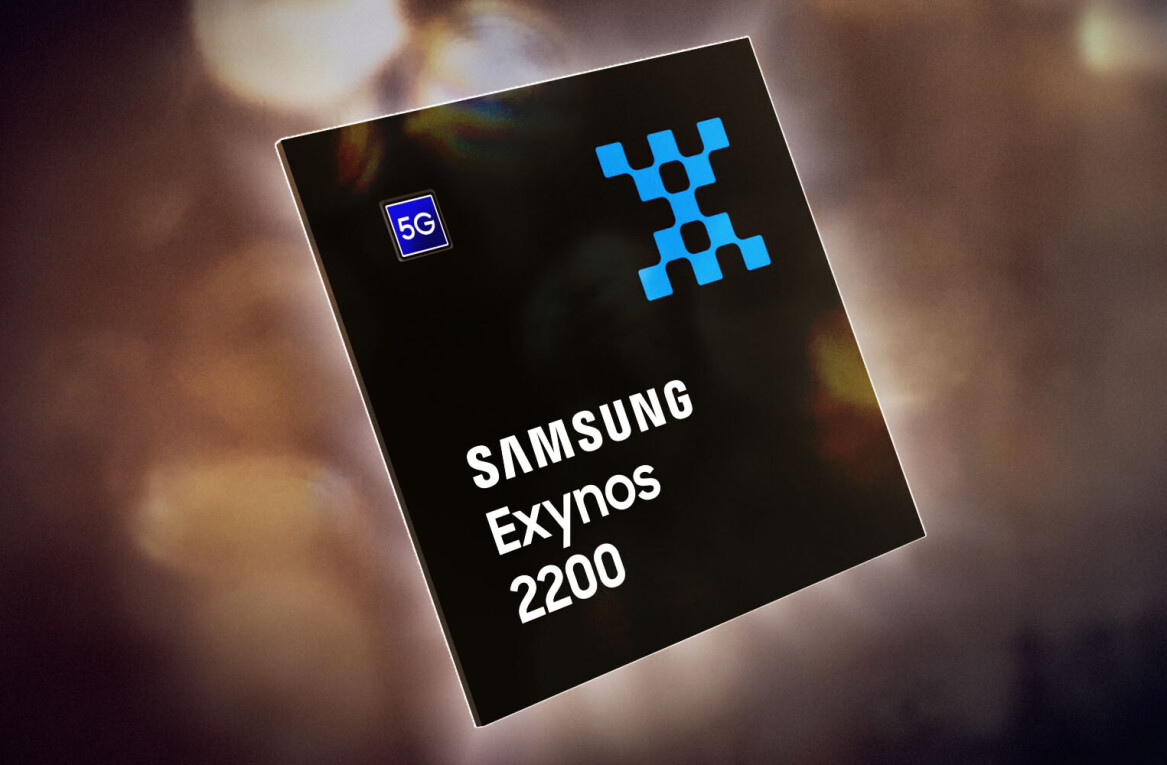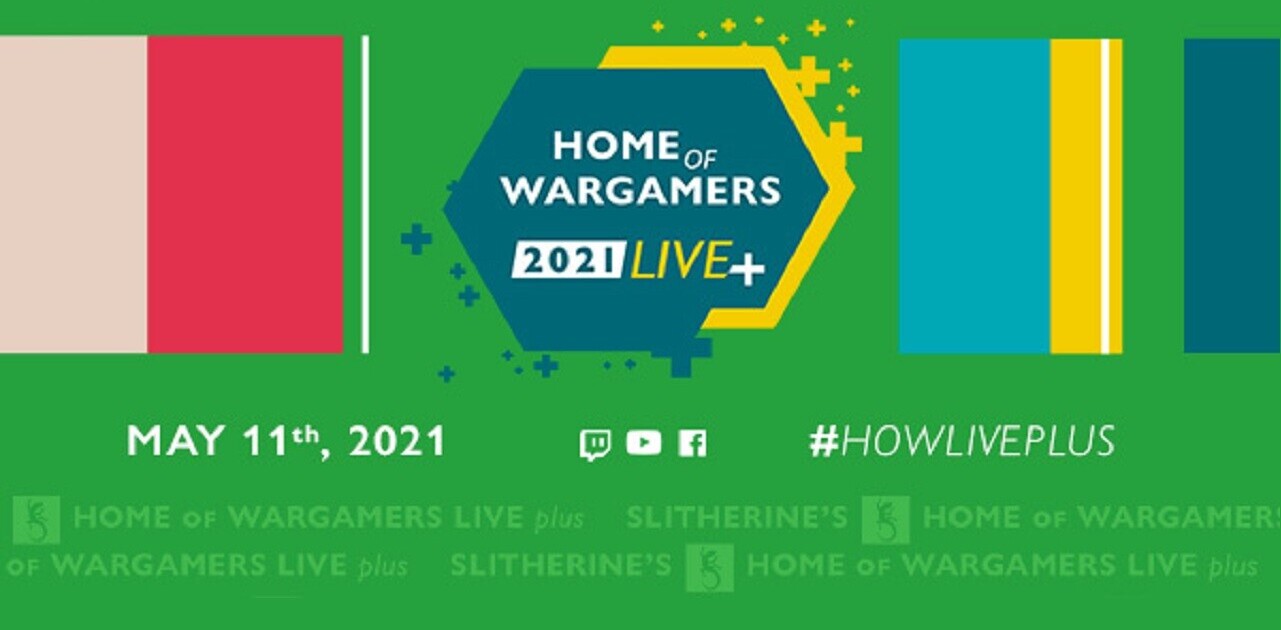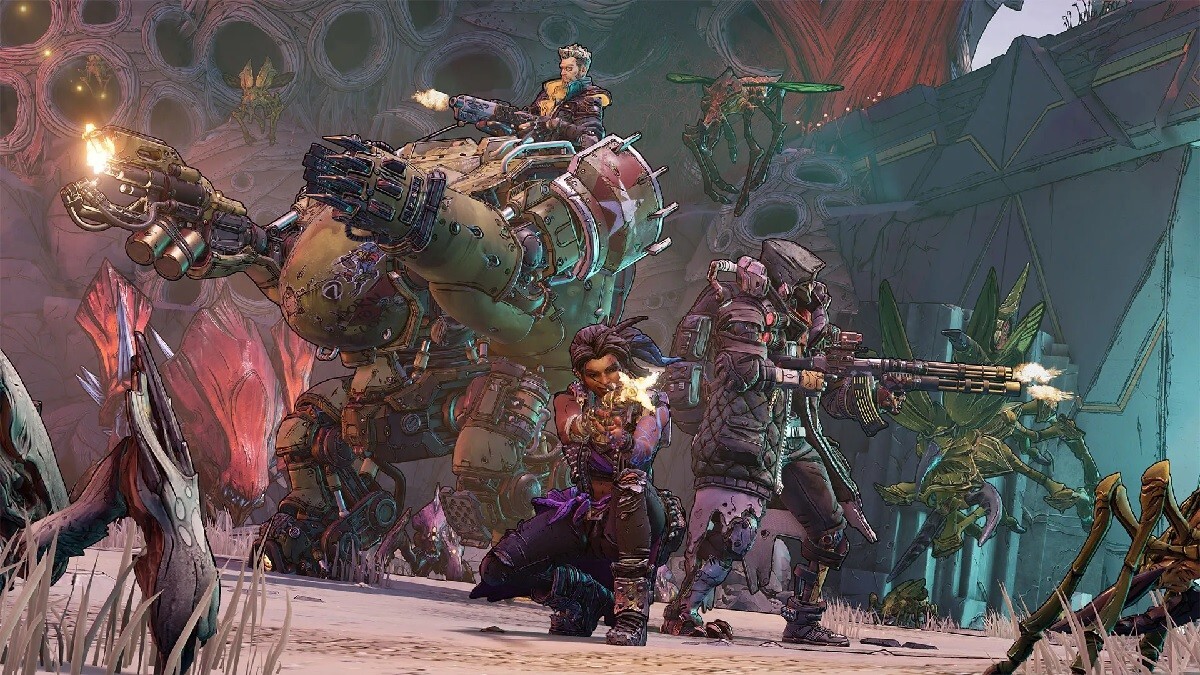
Borderlands 3 is like one of the vehicles from the Mad Max universe. It’s held together by duct-tape and twine, but it spits fire, looks cool, and goes really, really fast.
And I almost refused to review it once I started playing it, but we’ll get into that later.
Borderlands 3 feels like a tight, gonzo shooter. The controls are responsive and intuitive. As far as shooters go, once you dial in the aiming options you’re comfortable with it feels as good as anything out there. Each weapon feels unique and the combination of aesthetic differences and clever use of your controller’s vibration function really lends to the total immersion. You’ll end up tapping the “switch weapon” button and instantly knowing what your character is holding just by how it “feels” when you fire it.
The best thing about Borderlands 3 is that it’s the perfect game for people who like to play alone sometimes, with friends online sometimes, and with their buddy (or, in my case, fiancee) sitting on the couch next to them. You can always jump in and out of each other’s games without any muss or fuss. Up to 4 people online or 2 offline in split-screen mode can play through the entire story mode and several other game modes. It doesn’t matter whether you’re at different places in the campaign, or what respective levels you and your friends’ characters are, you can play together. It’s brilliant.
My only beef with game-play lies in the god awful freezing issue that happens in split-screen mode whenever a player brings up or interacts with a menu. If you’re shooting and your partner uses a menu it causes your screen to freeze for a few seconds. This also happened in Borderlands 2 and the Pre-Sequel. It’s not a deal-breaker by any means, but it’s incredibly immersion-breaking.
And immersion is important because the story behind Borderlands 3 is huge – there’s lore shoved into every nook and cranny of the universe.
You can enjoy the crap out of Borderlands with the sound turned down and the subtitles turned off, if you’re so inclined. It’s a great shooter, has great inventory and menu management systems, and it’s frickin’ gorgeous. But where it truly shines is in the clever, nuanced writing and heartfelt examinations on humanity that make up its campaign story.
Your character is a Vault Hunter. That’s a Borderlands way of saying “adventurer who seeks treasure.” The character you choose has their own backstory, hours worth of quips and reaction dialogue, and a unique skill tree that allows them to utilize special powers, gadgets, devices, or magic that only they can use. The four characters are very different from one another, and all are fun to play.
Of course, the non-binary robot Beastmaster, FL4K, is my favorite. FL4K uses they/them pronouns and seems intentionally written to represent the queer struggle of non-binary humans. Gearbox has always focused on making mostly inclusive games that go out of their way to show love and support to the LGBTQPIA+ community.
But I main the Gunner, Moze (her special ability summons a giant mecha with customizable guns that she can pilot for a few minutes at a time). Rounding out the list are the Siren (a badass, take-no-guff magical warrior) and a secret agent who can summon an attack drone, a digital clone, or a giant force field. Each one is worth playing just to see their unique NPC interactions and unfolding backstories.
The game’s voice acting is top-notch. Borderlands 2 was nominated for several awards for its cast and I assume Borderlands 3 will be too. Veteran fans might cringe a tiny bit at some of the replacements (Claptrap), but even those are well-done and the new cast members do the franchise justice.
But the most important “character” in the Borderlands universe isn’t a person, it’s the series’ trademark humor. Gearbox’s writers have always managed to make Borderlands raunchy, but self-aware. It straddles the line between Grand Theft Auto’s “I just don’t give a…” sense of humor and Saints Row’s delightful nonsense. I absolutely love most of it. It’s dark without trying to be edgelord-esque and surprisingly heartfelt.
There are plenty of laugh out loud moments and the vast array of “good” characters are diverse, well-written, and full of heart. You spend the majority of the game caught between different NPC’s motivations, sometimes changing targets or goals in mid-quest simply because fate is fickle and lovers become enemies – I won’t spoil anything, but you’ll attend to many an NPCs interpersonal relationships throughout the course of the game.
Borderlands 3’s central theme is about how power, or the lack of, drives how we treat one another. There’s a deep, meaningful story that plays out beneath the potty jokes and hyper-sexual undercurrent. It’s a tale of redemption, inner-strength, and realizing that love and loyalty are the strongest “powers” or “weapons” in our arsenal.
Borderlands 3 is a beautiful story full of diversity and humor. But it’s also an ableist nightmare. Dozens upon dozens of characters in the franchise are disabled. But not all are equal. Characters who are born “normal,” that end up disabled – amputees, for example – are typically portrayed as deep, meaningful characters. Characters who are born “different” – people with dwarfism, for example – are portrayed as cannon-fodder, psychotic, mindless, or evil. This isn’t a hard and fast rule, but to be honest I’m gobsmacked by the sheer ridiculousness of it.
Let’s take the game’s first boss, Shiv, for example:
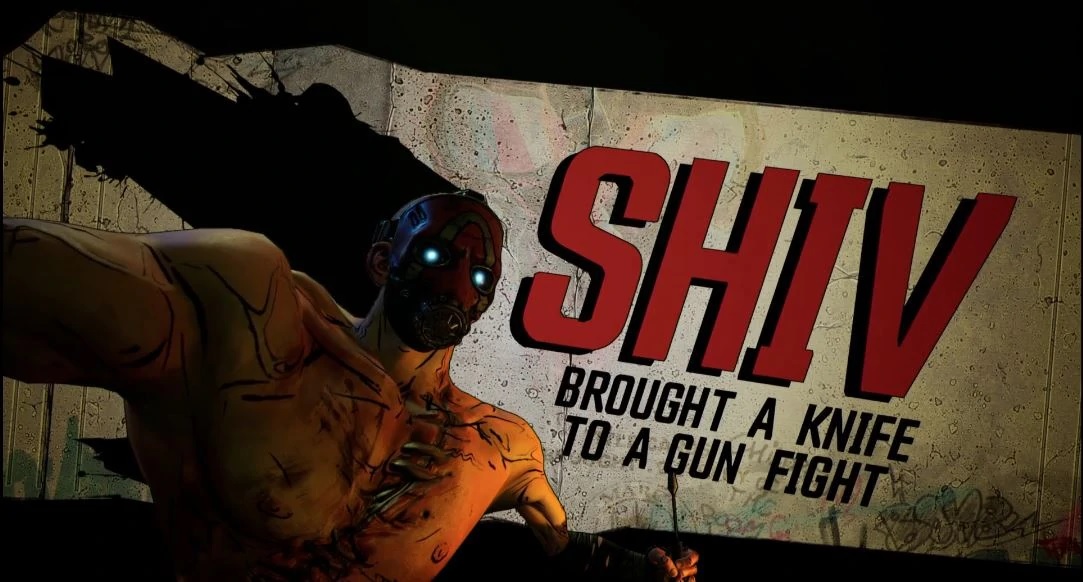
Unlike one of the main villains, who has a cybernetic robot arm, Shiv’s disability isn’t a superpower he gained through some injury or accident that makes him stronger: it’s a mockery. He’s the first (and thus weakest) boss in the game. I felt a little gross seeing his splash screen, but that’s nothing compared to the “tinks.”
Previous Borderlands games had an enemy unit called “midgets.” They’re about half the height of other enemy units and, typically, a bit more powerful. This makes it doubly hard to kill them: one, they’re tough and two, you’re not used to aiming so low. In the heat of battle, it’s a bit of a pain to take them out because it requires an adjustment.
Here’s the problem: there are no good “midgets” in the Borderlands universe (at least not featured prominently enough as to be memorable by comparison). That means a Google search for “Borderlands midgets” brings up a litany of message board results about how much people “hate” the “little” enemies.
Amid a decade of complaints, Gearbox didn’t choose to remove them or include sympathetic, positive representations of people with dwarfism to balance the mindless representation – no, the company didn’t give players with dwarfism a way to see themselves represented in a video game positively. Instead they changed the unit’s name from “midgets” to “tinks.” This sucks, it’s awful, and it does not pass the substitution test.
Whether you call them by socially acceptable terms (is “tink” even that?) or denigrating ones (such as “midget”), the problem remains the same. If someone made a game where all of the representations of people of a specific race or sexuality were psychotic enemies, and there were thousands of them to kill, there’d likely be more outrage.
In the words of Peter Dinklage:
Laughing at dwarfism is the last acceptable prejudice – but don’t seek my approval for your intolerance.
I struggled with the decision to post this review because here’s the deal: Borderlands 3 is on my shortlist for 2019’s game of the year, it’s fantastic. But the ableist bullshit that’s hardcoded into the franchise’s DNA is becoming a deal-breaker.
Let me be clear: nobody cares that they made a game where anyone, regardless of who they are or how tall they are, can be an enemy. Everyone can be an enemy in the Borderlands world, that’s great. I’m upset that only certain people can be sympathetic characters and the franchise goes out of its way to be ableist in its depictions of good and evil.
I want to love this game. Aside from the glaring ableism, it’s full of heart and soul and the writers obviously care deeply for the world they’ve created – even making it a diverse and welcoming place for most people. The wonderful writing and obvious efforts towards inclusivity is why I ultimately chose to complete my review. There’s a lot of good here.
I just don’t get how “tinks” and “Shiv” and other ableist crap made it into the game. It distracts from something that, otherwise, would be a beacon for the industry.
Get the TNW newsletter
Get the most important tech news in your inbox each week.
